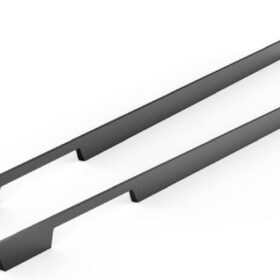Expert Tips for Maximizing G Profile Handle Efficiency
In the competitive world of manufacturing, efficiency is paramount. One crucial aspect that can significantly impact productivity is the efficient use of G profile handles. G profile handles are essential components in various industries, including machinery, construction, and automotive. By following these expert tips, you can optimize the efficiency of G profile handles and enhance the overall performance of your operations.
Proper Installation
The foundation of efficient G profile handle usage lies in proper installation. Ensure that the handle is correctly aligned and securely fastened to the surface. Use the appropriate screws or bolts for the specific handle and application. Improper installation can lead to premature wear, loose handles, and potential safety hazards.
Regular Maintenance and Lubrication
Regular maintenance is crucial to maintaining the longevity and performance of G profile handles. Inspect handles periodically for any signs of wear, corrosion, or damage. Lubricate moving parts with a suitable lubricant to reduce friction and ensure smooth operation. Proper maintenance helps prevent costly breakdowns and extends the handle’s lifespan.
Environmental Considerations
The environment where G profile handles are used can impact their efficiency. Exposure to extreme temperatures, moisture, or chemicals can accelerate wear and tear. Choose handles made of materials suitable for the specific operating conditions. For example, stainless steel handles are highly resistant to corrosion, while plastics offer insulation against electrical hazards.
Ergonomic Design
Operator comfort is essential for maintaining efficiency. G profile handles should be designed ergonomically to reduce fatigue and improve grip. Handles with non-slip surfaces, contoured shapes, and comfortable grips help prevent hand injuries and increase productivity. Proper ergonomics also reduce the risk of repetitive motion injuries, such as carpal tunnel syndrome.
Handle Selection and Replacement
Selecting the right G profile handle for the application is crucial. Consider the handle’s material, shape, size, and weight capacity. Replace worn or damaged handles promptly to ensure safety and maintain optimal performance. Use handles that are compatible with the specific equipment or machinery to prevent misalignment or premature failure.
Training and Education
Educating operators about the proper use and maintenance of G profile handles is essential. Training programs can cover safe handling techniques, lubrication schedules, and environmental considerations. Proper training ensures that handles are used effectively, reducing the likelihood of accidents and downtime.
By implementing these expert tips, manufacturers can significantly maximize the efficiency of G profile handles. Proper installation, regular maintenance, environmental considerations, ergonomic design, handle selection, and training contribute to improved productivity, reduced downtime, and enhanced safety in manufacturing operations.
-
2024-11-29Top Trends in Modern Kitchen Cabinet Pulls for 2024
-
2024-11-28The Ultimate Guide to Modern Kitchen Cabinet Pulls- Materials, Styles, and Tips
-
2024-11-27Elevate Your Kitchen Design with These Must-Have Modern Cabinet Pulls
-
2024-11-26Sleek and Stylish- The Best Modern Kitchen Cabinet Pulls for a Contemporary Look










